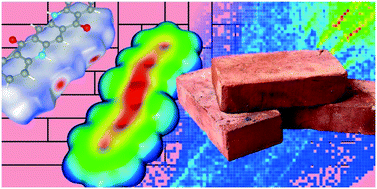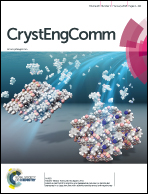Crystalline packing in pentacene-like organic semiconductors†
Abstract
Since optoelectronic properties of organic semiconductors (OSCs) are largely affected by the molecular packing in the solid phase, further advances of such materials require comprehensive structure–property interrelations beyond single molecule considerations. While single molecular electronic properties can be tailored by synthetic means and their electronic properties can be reliably predicted by quantum chemical calculations, crystal structure predictions of such van der Waals bond solids remain challenging. Here we analyze correlations between the molecular structure and the resulting packing motifs adopted in the crystalline phases of the prototypical OSC pentacene as well as various differently substituted but similarly shaped π-conjugated molecules. Based on a Hirshfeld surface analysis and related fingerprint plots, specific contact points and their distribution are identified which allows classification of different structural groups. Comparing the fingerprint plots with corresponding molecular properties such as electrostatic contour plots as well as quadrupole and polarizability tensors, which were calculated by density functional theory, allows rationalizing structure determining specific intermolecular interactions. Our analysis shows in particular that molecules with uniform electrostatic potential at their periphery favor a herringbone packing, while the highly electronegative substituents (O, N and F) enable the formation of H-bonds and prefer slip-stacking or criss-cross packing motifs. The present correlations might be useful guidelines for future strategies to synthesis new OSCs.



 Please wait while we load your content...
Please wait while we load your content...